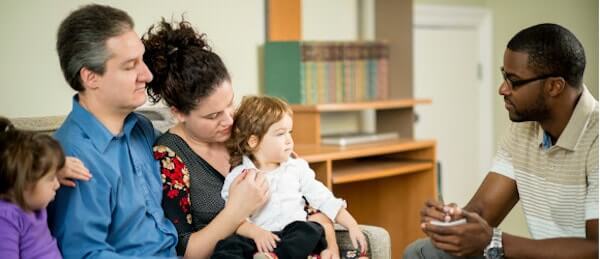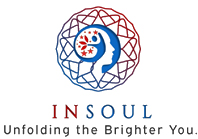What is Family Therapy?

“Why family therapy… because it deals with family pain.” – Virginia Satir
As the quote from Virginia Satir suggests, family therapy is necessary to address family pain and heal a family’s wounds. We all start this life with a family, whether that family is composed of blood relatives, adopted parents, or a foster family. This family that we acquire when we are born influences every aspect of our lives, from our first moments to our last.
Our family affects who we are and who we become, both for the better and for worse. We learn our vocabulary, our habits, our customs and rituals, and how to view and observe the world around us. We also learn how to love, and how to interact with others from these first important relationships. If we are born into a healthy family with healthy relationships, we are likely to learn how to maintain healthy relationships. If we are born into a dysfunctional family that struggles to connect, we may also struggle to connect with others.
While it is certainly unlucky to be born into the second kind of family, it’s not an unchangeable situation. Nearly all families deal with some sort of dysfunction at one time or another, yet most families retain or regain a sense of wholeness and happiness. Family therapy offers families a way to do this – a way to develop or maintain a healthy, functional family.
What is Family Therapy / Family Counseling?
Family therapy or family counseling is a form of treatment that is designed to address specific issues affecting the health and functioning of a family. It can be used to help a family through a difficult period of time, a major transition, or mental or behavioral health problems in family members.
Family therapy views individuals’ problems in the context of the larger unit: the family. The assumption of this type of therapy is that problems cannot be successfully addressed or solved without understanding the dynamics of the group. The way the family operates influences how the client’s problems formed and how they are encouraged or enabled by the other members of the family. Family therapy can employ techniques and exercises from cognitive therapy, behavior therapy, interpersonal therapy, or other types of individual therapy. Like with other types of treatment, the techniques employed will depend on the specific problems the client or clients present with.
Behavioral or emotional problems in children are common reasons to visit a family therapist. A child’s problems do not exist in a vacuum; they exist in the context of the family and will likely need to be addressed within the context of the family. It should be noted that in family therapy or counseling, the term “family” does not necessarily mean blood relatives. In this context, “family” is anyone who “plays a long-term supportive role in one’s life, which may not mean blood relations or family members in the same household”.
These are the most common types of family therapy:
- Bowenian: this form of family therapy is best suited for situations in which individuals cannot or do not want to involve other family members in the treatment. Bowenian therapy is built on two core concepts, triangulation (the natural tendency to vent or distress by talking to a third party) and differentiation (learning to become less emotionally reactive in family relationships).
- Structural: Structural therapy focuses on adjusting and strengthening the family system to ensure that the parents are in control and that both children and adults set appropriate boundaries. In this form of therapy, the therapist “joins” the family in order to observe, learn, and enhance their ability to help the family strengthen their relationships.
- Systemic: The Systemic model refers to the type of therapy that focuses on the unconscious communications and the meaning behind family members’ behaviors. The therapist in this form of treatment is neutral and distant, allowing the family members to dive deeper into their issues and problems as a family.
- Strategic: This form of therapy is more brief and direct than the others, in which the therapist assigns homework to the family. This homework is intended to change the way family members interact, assess and adjust the way the family communicates and makes decisions. The therapist takes the position of power in this type of therapy, which allows other family members who may not usually hold as much power to communicate more effectively.
What is a Family Counselor Trained For?
“In this therapy, the therapist takes responsibility for the outcome of the therapy. This has nothing to do with good or bad, guilt or innocence, right or wrong. It is the simple acknowledgement that you make a difference.” – Eileen Bobrow
As the different types of therapy described above show, a family therapist may be called upon to take on many different roles. These many roles require a family therapist to undergo a great deal of training, formal education, and testing to ensure that the therapist is up to the task.
While therapists may have different methods and preferred treatment techniques, they must all have at least a minimum level of experience with the treatment of:
- Child and adolescent behavioral problems
- Grieving
- Depression and anxiety
- LGBTQ issues
- Domestic violence
- Infertility
- Marital conflicts
- Substance abuse
In order to treat these and other family issues, therapists must:
- Observe how people interact within units
- Evaluate and resolve relationship problems
- Diagnose and treat psychological disorders within a family context
- Guide clients through transitional crises such as divorce or death
- Highlight problematic relational or behavioral patterns
- Help replace dysfunctional behaviors with healthy alternatives
- Take a holistic (mind-body) approach to wellness
In order to gain the skills necessary to perform these functions, a family therapist usually obtains a bachelor’s degree in counseling, psychology, sociology, or social work, followed by a master’s degree in counseling or marriage and family therapy. Next, the therapist will most likely need to complete two years of supervised work after graduation, for a total of 2,000 to 4,000 hours of clinical experience. When these requirements are met, the therapist will also likely need to pass a state-sanctioned exam, as well as completing annual continuing education courses.

This education and training will allow a therapist to help the clients who come to the therapist for guidance with a wide range of problems, including:
- Personal conflicts within couples or families
- Unexpected illness, death, or unemployment
- Developing or maintaining a healthy romantic relationship at any stage
- Behavioral problems in children
- Divorce or separation
- Substance abuse or addiction
- Mental health problems like depression and anxiety
This wide range of problems makes it clear that the answer to “What is a family therapist NOT trained to do?” may be shorter than the question of what they ARE trained to do!
What is the Goal of Family Therapy?
“To put the world right in order, we must first put the nation in order; to put the nation in order, we must first put the family in order; to put the family in order, we must first cultivate our personal life; we must first set our hearts right.” – Confucius
In a nutshell, the goal of family therapy is:
To work together to heal any mental, emotional, or psychological problems tearing your family apart. In order to help a family work together towards a healthy family life, family therapists aim to aid family members in improving communication, solving family problems, understanding and handling special family situations, and creating a better functioning home environment.
More broadly, the goals of family therapy depend on the presenting problems of the clients. For example, the goals differ based on the following scenarios:
- A family member is suffering from schizophrenia or severe psychosis:
The goal is to help other family members understand the disorder and adjust to the psychological changes that the patient may be undergoing. - Problems arising from cross-generational boundaries, such as when parents share a home with grandparents, or children are being raised by grandparents:
In this case, the goal is to improve communication and help the family members set healthy boundaries. - Families deviating from social norms (unmarried parents, gay couples raising children, etc.):
The goals here are not always to address any specific internal problems, but the family members may need help coping with external factors like societal attitudes. - Family members who come from mixed racial, cultural, or religious backgrounds:
The goal, in this case, is to help family members further their understanding of one another and develop healthy relationships. - One member is being scapegoated or having their treatment in individual therapy undermined:
When one family member is struggling with feeling like the outcast or receives limited support from other family members, the goal is to facilitate increased empathy and understanding for the individual within their family and provide support for them to continue their treatment. - The patient’s problems seem inextricably tied to problems with other family members:
In cases where the problem or problems are deeply rooted in problems with other family members, the goal is to address each of the contributing issues and solve or mitigate the effects of this pattern of problems. - A blended family (i.e., step-family):
Blended families can suffer from problems unique to their situations. In blended families, the goal of family therapy is to enhance understanding and facilitate healthy interactions between family members.
Family Psychotherapy: Taking it One Step Further
We tend to think of therapy and psychotherapy as two different forms of treatment, but in fact, they are the same thing. This ambiguity is enhanced when we introduce the term “counseling” as well.
In truth, therapy is simply a shortened form of the word “psychotherapy”. However, counseling is sometimes called “talk therapy,” blurring the lines even further. Generally, counseling is applied in situations where an individual (or, in the case of family counseling, a family) engages the services of a counselor or other mental health professional to help with a specific problem or set of problems. Therapy, or psychotherapy, is a more in-depth and usually long-term form of treatment in which the client or clients discuss a wider range of issues and chronic patterns of problematic feelings, thoughts, and behaviors.
A family who is struggling with a situation that brings added stress, such as the death of a family member, addiction, or dire financial straits, may benefit from counseling to help them through their struggles to emerge on the other side as a stronger and more cohesive unit. If a family is struggling with more chronic mental or behavioral problems, such as a father dealing with schizophrenia, a mother fighting depression, or a child who has been abused, psychotherapy is likely the better choice.
This type of therapy is appropriate for families with problems such as these because a family therapist has a different perspective on treatment than an individual therapist. While the individual therapist works with one client on solving or curing a problem, the family therapist views problems in the context of the “system” of the family. To solve a problem in a system, you need to consider all parts of the system.
Fixing the alternator in a car will not fix the problem if it also has flat tires, a faulty transmission, and a plugged exhaust pipe.
Issues within a family are similar to the car with several problems. A parent struggling with alcoholism is not a problem in isolation; the parent’s struggle has likely affected their spouse and their children as well. A family therapist believes that problems must be addressed at the level of the whole family rather than on an individual level.
What are the Benefits of Family Therapy?
This more holistic approach to treating problems within a family has proven to be extremely effective in many cases. In family therapy, families can work on their problems with the guidance of a mental health professional in a safe and controlled environment.
The benefits of family therapy include:
- A better understanding of healthy boundaries and family patterns and dynamics
- Enhanced communication
- Improved problem solving
- Deeper empathy
- Reduced conflict and better anger management skills
More specifically, family therapy can improve the family relationships through:
- Bringing the family together after a crisis
- Creating honesty between family members
- Instilling trust in family members
- Developing a supportive family environment
- Reducing sources of tension and stress within the family
- Helping family members forgive each other
- Conflict resolution for family members
- Bringing back family members who have been isolated.
In addition, family therapy can enhance skills required for healthy family functioning, including communication, conflict resolution, and problem-solving. Improving these skills for each member of the family increases the potential for success in overcoming or addressing family problems. In family therapy, the focus is on providing all family members with the tools they need to facilitate healing.
